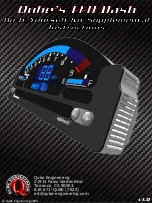
General
•
Store all vehicles in a dry, ventilated place.
•
Protect from sunlight, if possible.
•
If vehicles are stored outside, they require regular maintenance to
protect against rust and damage.
Body
•
Wash vehicle thoroughly to remove dirt, grease, oil, tar or mud from
exterior surfaces, rear-wheel housing and underside of front fenders.
See the
Cleaning
chapter for more information.
•
Periodically wash vehicles stored in exposed locations.
•
Touch-up raw or primed metal to prevent rust.
•
Cover chrome and stainless steel parts with a thick coat of auto wax
to prevent discoloration. Re-wax as necessary when the vehicle is
washed. See the
Cleaning
chapter for more information.
•
Lubricate all hood, door and trunk lid hinges, and latches with a light
grade oil. See the
Cleaning
chapter for more information.
•
Cover interior trim to prevent fading.
•
Keep all rubber parts free from oil and solvents.
Engine
•
The engine oil and filter should be changed prior to storage, as used
engine oil contain contaminates that may cause engine damage.
•
Start the engine every 15 days. Run at fast idle until it reaches normal
operating temperature.
•
With your foot on the brake, shift through all the gears while the
engine is running.
Fuel system
•
Fill the fuel tank with high-quality fuel until the first automatic shutoff
of the fuel pump nozzle.
Note:
During extended periods of vehicle storage (30 days or more),
fuel may deteriorate due to oxidation. Add a quality gas stabilizer
product to the vehicle fuel system whenever actual or expected storage
periods exceed 30 days. Follow the instructions on the additive label.
The vehicle should then be operated at idle speed to circulate the
additive throughout the fuel system.
Maintenance and Specifications
296
2011 Econoline
(eco)
Owners Guide, 3rd Printing
USA
(fus)
















































